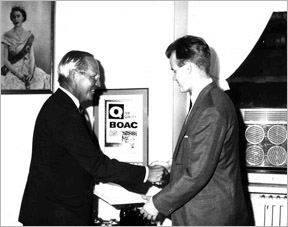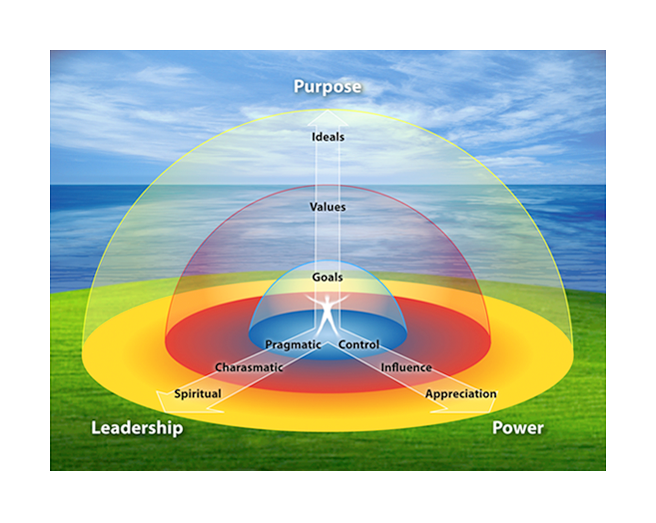About Us
By Director William E. Smith, PhD, ODII Organizing for Development, LLC
The Origin
AIC grew out of my personal search for an explanation of what seemed to be an accidental example of high performance in my first full-time job as an airport manager. I was working for British Overseas Airlines and made Rome the best-performing airport network in six months—without the power of control to tell people what to do and without spending any extra funds. Neither I nor anyone else in the airline was able to explain the results (more details: BOAC)

Italy’s Manager Congratulating Me
I was so intrigued that I left England to study organization and management in the USA. I was disappointed to find that none of the theories or practice I learned could explain the results to my satisfaction. After seeking but not finding answers through jobs in the consulting and pharmaceutical Industries, I decided that we needed new concepts. I enrolled in a PhD program in Social Systems Sciences at the Wharton Graduate School of Business.
I very consciously sought answers beyond the privileged world of my first-world business experience in the third world of International Development. Through a five-year program of action research I finally discovered a set of naturally occurring power relationships that accounted for high levels of achievement and could explain the achievement in Rome.
I called these three power relationships—appreciation, influence and control—AIC. When leaders and organizations pay equal attention to these powers the results they receive go exponentially beyond their expectations. It was, especially, the addition of the idea of appreciation—taking into account all those variables that affect your performance but that you cannot influence or control—that accounted for the dramatic change. The addition of appreciation made what seemed impossible possible. At that time and to this day, most leaders and managers emphasize control. They are beginning to understand influence but generally avoid or openly oppose attempts at appreciation. At Rome I had primarily applied appreciation intuitively, without consciously knowing what I was doing. With hindsight, I was lucky because the Italians were applying influence and control, and I had provided the missing ingredient of appreciation. It made the dramatic difference. In other situations, without an appropriate balance of influence and control, it probably would not have worked.

|
||
The AIC Model
©2015 odii, Organizing for Development, LLC
I spent the next twenty years applying AIC to the design of projects, programs, economic sectors, entire countries and finally to the global development system. (See AIC-3 Library). As exciting as this discovery was—it was hailed by the international development community as "a giant leap for mankind"—I was even more surprised at an even greater discovery. In presenting the three circles at a workshop, one of the participants asked me:
Bill, this is great, but where is the human being in all of this?
I immediately knew what he meant and placed a human being in the center of the three circles and added:
That human being in the center is always you!
That evening as I looked at a chart and the human being in the center of the three concentric circles of power—one of control, one of influence and one of appreciation—I asked:
If that human being in the center is me
and those three circles are my power,
where does this power come from?
I was astonished when the answer came back instantly, clearly and convincingly:
Purpose is the source of power.
Every purpose no matter how big or small
creates three circles of power:
appreciation, influence and control.
I was even more surprised to discover that no one had ever published this simple idea before:
Purpose is the source of power!
The human representing purpose is now at the center of every chart illustrating AIC relationships that I produce. That every purpose creates its own field of appreciation, influence and control means that everything we have learned about making organizations exponentially more powerful we can apply to any purpose—from personal to global.
Once you learn the AIC process you can apply it to yourself, your group, organizations, institutions and cultures or any global system. Even more, AIC becomes a meta-design process that allows you to integrate the multiple levels of any system or group of systems.
I finally put all the pieces together in a PhD program in Social Systems Sciences at Wharton Graduate School of Business. For my thesis I purposely chose an area as far away as possible from my privileged experience with first-world corporations. I chose to develop the new concepts while attempting to solve the most difficult organizational problems I could find: those solving the problems of poverty through rural development in the third world.

W. E. Smith, PhD
Transforming
Ourselves,
Our Organizations,
and Our World more..


